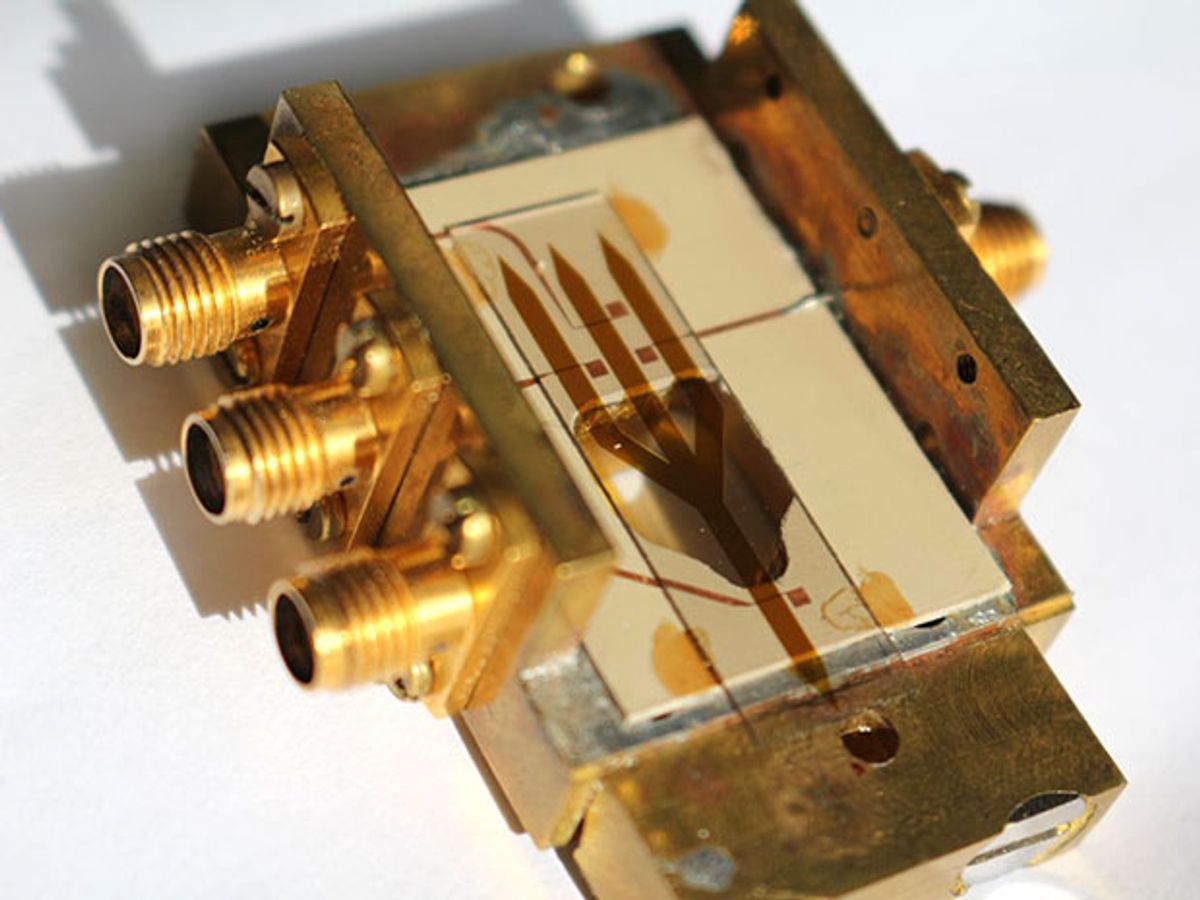As we approach the physical limits of electrical currents performing the same logic computations as previous generations of digital electronics, the question has become: How do we continue to fabricate logic gates when the devices are too small for classical physics?
A European collaborative research center called Spin+X has offered a prototype of a device that leverages something called spin waves, which may offer a way forward. Spin waves are the synchronous waves of electron spin alignment observed in a magnetic system. If the prototype is any indication, then researchers may have another avenue to explore when traditional electronics reaches its physical limits.
Spin+X is funded by the German Research Foundation as well as the European Union–funded project InSpin. It's also been supported by the Belgian nanotechnology research institute Imec. This concentration of expertise has led to the recent development of what the researchers have dubbed a spin-wave majority gate.
Traditional semiconductor-based logic gates—known as majority gates—output current to match either the “0” or “1” state that comprises one of its three input currents, or three voltages. In the spin-wave majority gate described in the journal Applied Physics Letters, the researchers built it out of yttrium-iron-garnet (YIG); its basic operating principle relies on the magnetic material’s atomic magnetic moments, which are essentially the strength of an atom’s magnetism. When these magnetic moments are aligned by an externally applied magnetic field, they interact with each other.
“The interaction can be very well visualized by simply imagining two bar magnets,” explains Tobias Fischer, a doctoral student at the University of Kaiserslautern, in Germany, and lead author of the paper, in an email interview with IEEE Spectrum. “If one brings them together closely and moves one of the magnets, the second magnet will also be influenced by the first magnet's motion.”
The same holds true for the atomic magnetic moments, according to Fischer. When the researchers locally apply a magnetic radio frequency (RF) field in the input wave guides (which, in this case, is produced by sending RF currents through the copper structures underneath the three inputs of a trident structure), this forces some moments to precess around the direction of the external field. The phenomenon known as “precess” occurs when atoms with unpaired electron spins are placed in a magnetic field and rotate around the magnetic field at a precise frequency. This frequency depends on the field strength and the atom's magnetic moment.
The waves excited in the three input wave guides propagate toward the combiner of the device and interfere with each other, resulting in a wave propagating toward the output. Since a spin wave in a wave guide comes with a stray magnetic field around the wave guide, this can again be picked up inductively by another antenna underneath the output wave guide. The phase of the output wave now depends on the phases of the input wave, which is used to encode and process information.
“The interaction between the magnetic moments also makes neighboring moments start to precess,” says Fischer. “This wave-like excitation begins to propagate through the magnetic material and that is what we call spin wave (or, in the particle picture, magnon).”
The term “magnon” refers to the quasiparticles of spin waves and explains why this field of research is being called "magnonics." In contrast to spintronics, which only makes use of the electric charge as a property of electrons as well as its spin moment, magnonics employs spin-wave excitations in magnetic materials.
“Basically, spintronics still requires electric currents but usually restricts these currents to consisting only of spin-up or spin-down electrons, thus providing an additional degree of freedom to process or encode information,” explains Fischer. “However, magnonics can operate without any electric currents by only relying on the propagation of spin waves in a magnetic material as a carrier of information.”
This ability leads to some pretty clear advantages for magnonics, according to Fischer. Since it avoids electric currents, losses such as Joule heating can be drastically reduced. Also, spin waves can feature wavelengths in the nanometer range and gigahertz frequencies, which allows for downscaling of devices and high clock frequencies.
Nevertheless, there are still some challenges to be overcome, such as the efficient excitation and detection of spin waves in order to couple magnonics to conventional electronics.
While there has been another majority-gate device based on magnons, according to Fischer, that device was based on the excitation of magnons via spin-current injection from adjacent platinum structures and the propagation of magnons in a plain film of magnetic material. “As a consequence, this device would not be suitable to make use of the advantages of a wave-guide-based majority gate such as mode selection in the output wave guide,” he adds.
One of the areas that will need to be addressed in future research will be the material science. While YIG features a very low damping resulting in spin waves propagating long distances, CMOS compatibility of this material is rather limited, according to Fischer. “It would also be nice to have a material which can easily be deposited by conventional sputtering techniques, which is also not the case for YIG,” he adds.
In addition, the device has to be significantly miniaturized. Toward this end, Fischer and his colleagues are looking into fabricating majority gate structures from Heusler thin films, which are mixtures of elements that together have desirable thermoelectric properties.
Fischer adds, “All in all, I think there are still challenges to be overcome until a real implementation of spin-wave devices in information technology comes within reach, but I think we are well on track with investigating the fundamentals of such a concept.”
Dexter Johnson is a contributing editor at IEEE Spectrum, with a focus on nanotechnology.



